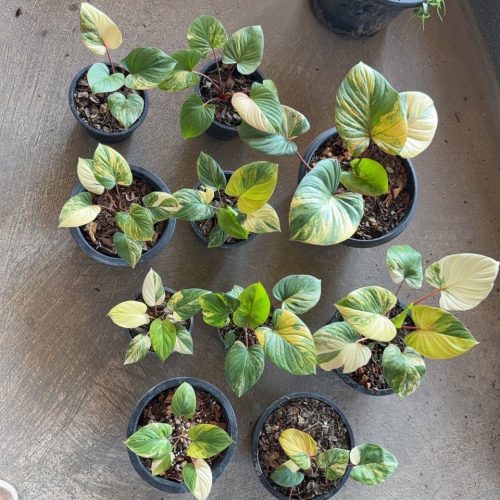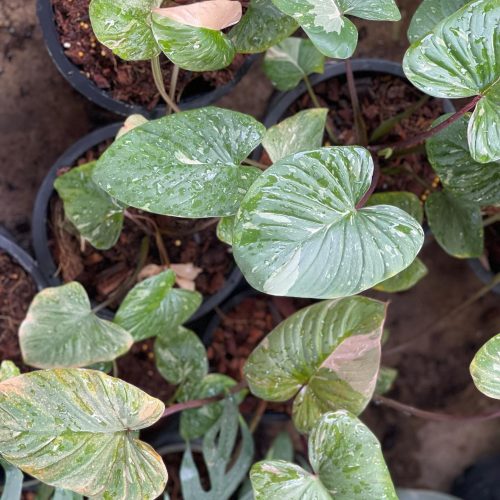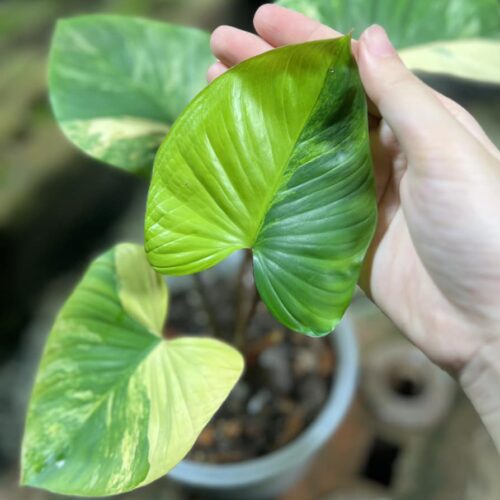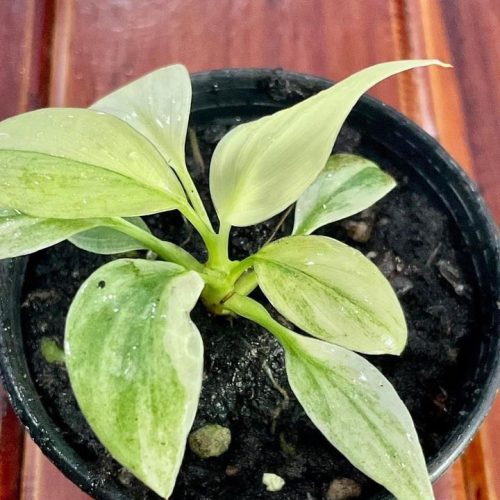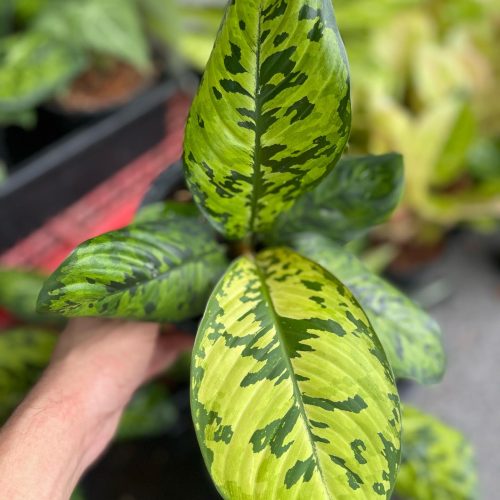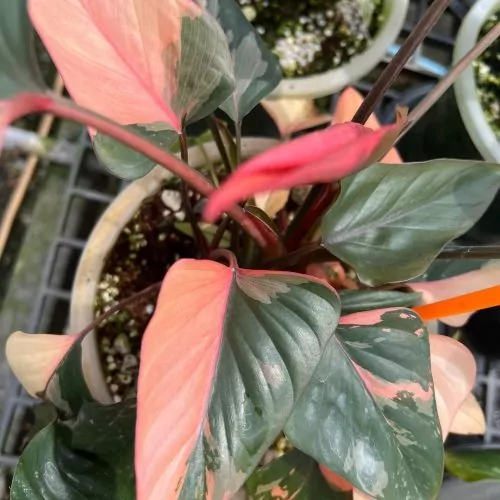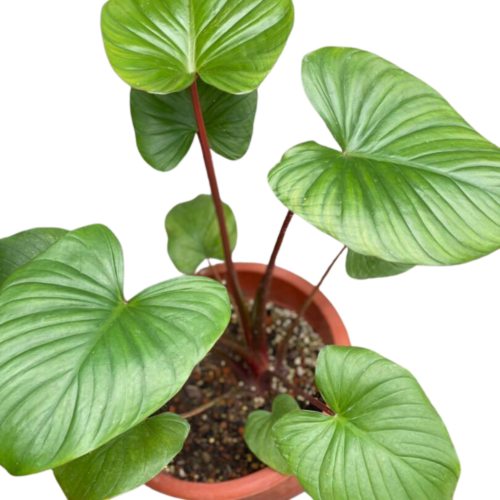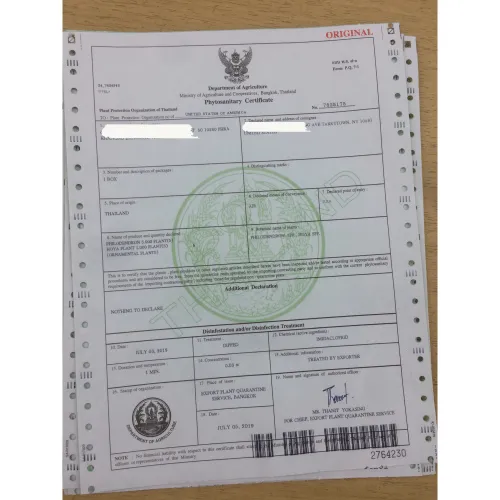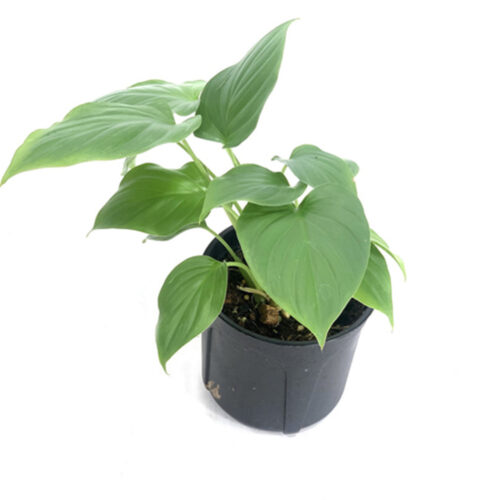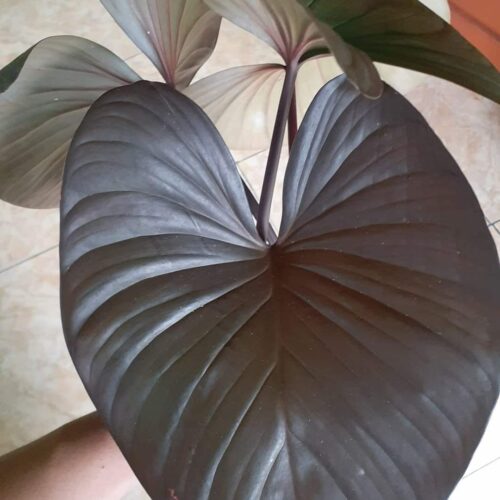The Homalomena Rubescens, also known as the Red Stem Taro Vine or Lucky Plant, is a popular houseplant known for its lush green and red-tinged foliage. Native to the tropical rainforests of Malaysia and Indonesia, this aroid thrives in warm, humid environments with bright indirect sunlight.
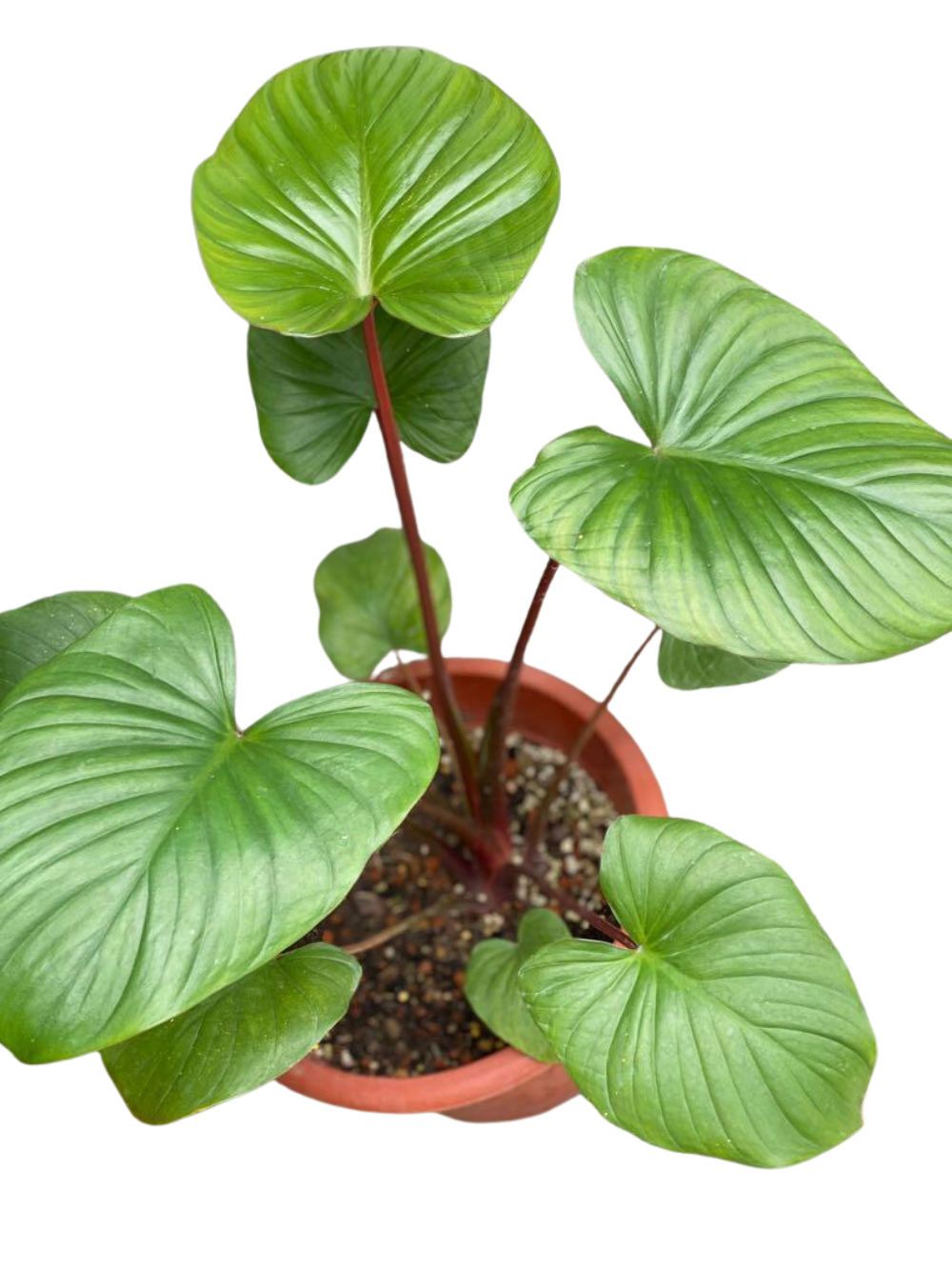
If you’d like to add this eye-catching vine to your indoor plant collection, follow these five easy steps for successfully growing healthy Homalomena Rubescens:
Choose an Appropriate Pot and Soil
The Homalomena Rubescens appreciates a rich, well-draining potting mix.
Select a Pot with Drainage Holes
- Pick a pot with several drainage holes at the bottom to prevent soggy soil. Plastic and ceramic pots both work well.
- Opt for a pot that’s wider than it is tall to accommodate the spreading roots. A 10-12 inch wide container is ideal for mature plants.
Use an Aroid Potting Mix
- Use an aroid or tropical plant soil mix. This will contain lots of organic material for moisture retention.
- You can make your own mix with peat moss, perlite, bark chips, compost and orchid bark.
- Make sure the soil drains well to prevent root rot.
To ensure you’re selecting the best pot and soil mix for your Homalomena Rubescens, refer to our comprehensive guide on “Caring for an Homalomena – 5 Important Things to Keep in Mind“. This document provides in-depth insights into the ideal soil requirements and potting mixes for Homalomena plants.
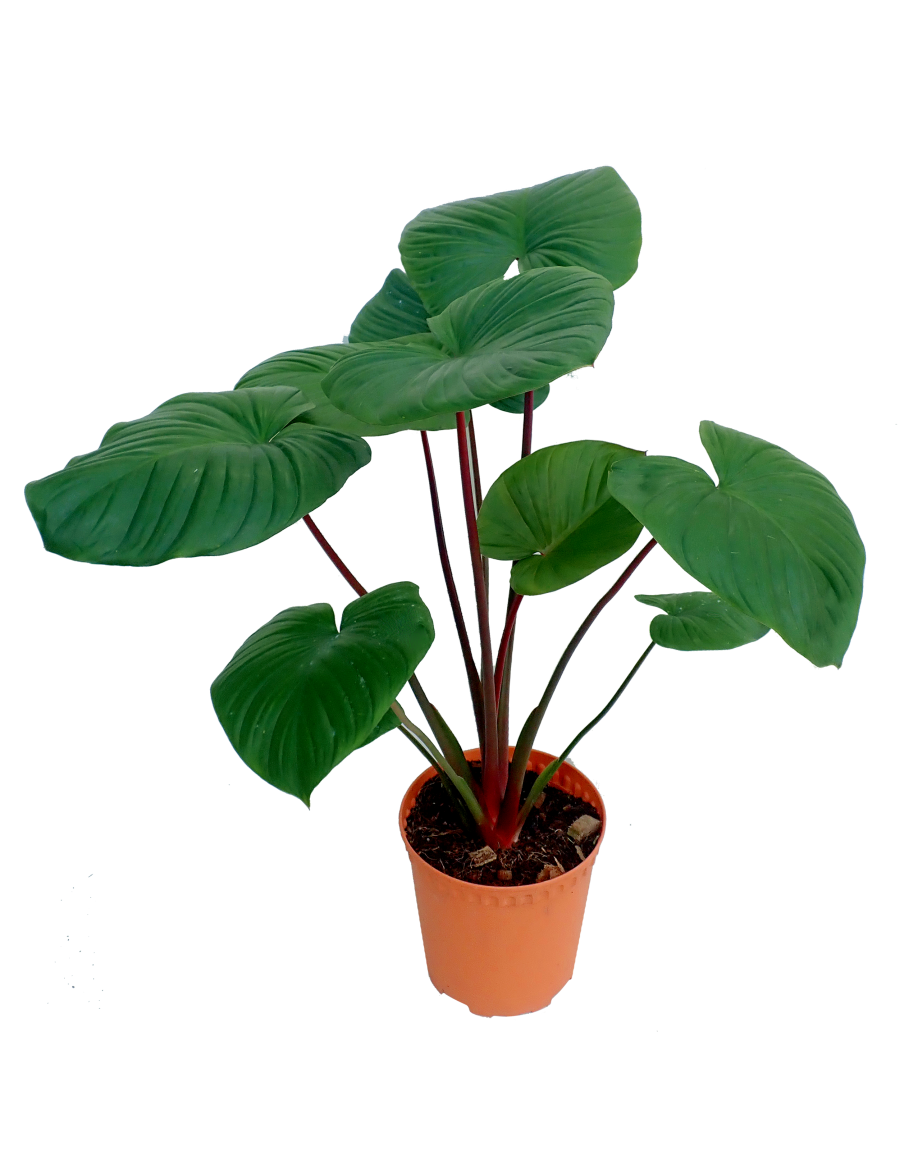
“Enhance your space with the vibrant beauty of Homalomena Rubescens Red Stem – Buy now and bring nature’s elegance into your home!”
Provide the Right Growing Conditions
Homalomena Rubescens thrives in consistent warmth and high humidity similar to its native jungle habitat.
Temperature
- Maintain temperatures between 65-80°F during the day and above 60°F at night.
- Keep away from cold drafts which can damage leaves. Move away from air conditioning vents as needed.
Humidity
- Ideal humidity levels are 60-80%. Lower humidity can cause leaf tip burn.
- Use a humidifier, pebble tray, or group plants together to boost moisture.
- Frequently mist leaves with room temperature water to hydrate the plant.
Lighting
- Locate in bright, indirect light. A north or east facing window is often ideal.
- Direct hot sunlight will scorch leaves. Filter harsh light with a sheer curtain.
- Low light will cause leggy growth and loss of red coloration. Provide enough brightness to maintain red stems and leaves.
Maintaining the perfect environment is crucial for the health of your Homalomena Rubescens. For expert tips on creating an ideal habitat, explore our detailed article “Homalomena Temperature and Humidity: 101 Guide“. It covers essential information about the temperature and humidity needs of these tropical plants.

Water Properly
Establish a consistent watering routine to keep the soil moist but not soaked. Both under and overwatering can cause issues.
Create a Regular Watering Schedule
- Water whenever the top inch of soil becomes dry. Expect to water as often as 1-2 times per week in warmer months.
- Reduce watering frequency in winter but don’t allow soil to dry out completely.
- Always water thoroughly until it drains from the pot’s bottom. Consistent moisture is key.
Increase Watering in Higher Temperatures or Humidity
- Hot and humid conditions cause faster moisture loss through the leaves via transpiration.
- Boost watering amounts by around 25% during summer heat waves or very dry indoor climates.
Check Soil Moisture Frequently
- Use your finger to test moisture 1 inch below the surface before adding more water.
- If the soil stays wet for over a week, allow it to fully dry before the next watering to prevent root diseases.
Watering your Homalomena Rubescens correctly is key to its growth and health. To learn more about the watering needs and techniques for Homalomena plants, check out our specialized guide, “Unlocking the Secret to Thriving Homalomena: Watering Tips“. This resource offers valuable advice on ensuring your plant receives the right amount of moisture.
Fertilize Regularly During Growth Periods
Like most tropical foliage plants, Homalomena thrives with monthly feedings of a balanced diluted fertilizer. This keeps leaves lush and colorful.
Use a Houseplant Fertilizer
- Choose a brand formulated specifically for indoor potted plants. Look for equal N-P-K ratios like 15-15-15.
- Organic or chemical fertilizers both work well. Follow package label instructions.
Fertilizer Monthly Spring Through Fall
- Fertilize once every 4-6 weeks from early spring until late fall when active growth occurs.
- Discontinue fertilizing over winter when plant goes dormant. Resume in early spring.
Flush Soil of Buildup
- Always dilute fertilizer to half strength or less to avoid burn. More isn’t better.
- Flush soil every few months with clean water to prevent salt accumulation from fertilizer. Let water flow freely through drainage holes.
Propagate Through Stem Cuttings
Producing babies from stem cuttings is the most effective propagation method. This maintains the desired leaf variegations.
Select a Healthy Shoot
- Choose a stem at least 3 inches long. Select green tip growth or partially woody stem section.
- Use a clean knife or pruners to detach cutting just below a leaf node.
Dip Cutting in Rooting Hormone
- Dip the raw end of the cutting into rooting powder. This encourages faster root growth.
- Stick into potting mix before hormone dries.
Maintain High Humidity
- Place pot inside a plastic bag or propagation dome to keep humidity very high.
- Mist plant daily and make tiny drainage holes in the bag. Don’t allow cutting leaves to sit in water.
Wait 6-8 Weeks for Roots
- Keep soil slightly moist but not soggy during root development.
- Expect tiny white root hairs to emerge in 1-2 months. Acclimate the new plant slowly to lower humidity levels.
Where to buy Homalomena Rubescens Red Stem? Benefits from importing plants from Thailand
- Shipping: Door to door shipping, fast and safe with Dragon Courier
- Biodiversity: Thailand is known for its rich biodiversity, including a wide variety of aroid species. This diversity allows importers to access a broad range of unique and exotic aroid plants.
- Quality and Health of Plants: The suitable climate helps the plants grown here stay healthy and of high quality.
- Cost-Effectiveness: Due to favorable growing conditions and efficient production methods, Thai aroid plants can often be more cost-effective compared to those from other countries.
- Access to Hybrid Varieties: Thai growers are often involved in the development of new hybrid aroid varieties, offering unique plants that may not be available from other sources.
Homalomena species are the most sought after by aroid plant lovers
FAQ
- What is a Homalomena Rubescens Red Stem plant?
- A Homalomena Rubescens Red Stem is a tropical houseplant known for its striking red stems and lush green leaves. It’s a popular choice among indoor plant enthusiasts.
- How do I care for my Homalomena Rubescens Red Stem?
- To care for your Homalomena Rubescens Red Stem, place it in bright, indirect sunlight, keep the soil evenly moist (but not waterlogged), and maintain a humid environment. Regularly dust the leaves to keep them clean and healthy.
- What are some common issues I might encounter when growing Homalomena Rubescens Red Stem?
- Common issues with Homalomena Rubescens Red Stem include overwatering, which can lead to root rot, and pest infestations like mealybugs or spider mites. It’s important to monitor your plant for signs of these problems.
- Can I propagate my Homalomena Rubescens Red Stem?
- Yes, you can propagate your Homalomena Rubescens Red Stem through division or by taking stem cuttings. Division is usually the preferred method, and it’s best done during the plant’s active growing season.
- Is Homalomena Rubescens Red Stem a pet-friendly plant?
- No, Homalomena Rubescens Red Stem is not considered pet-friendly. The plant contains compounds that can be toxic to pets if ingested. It’s best to keep it out of reach of cats, dogs, and other animals.

